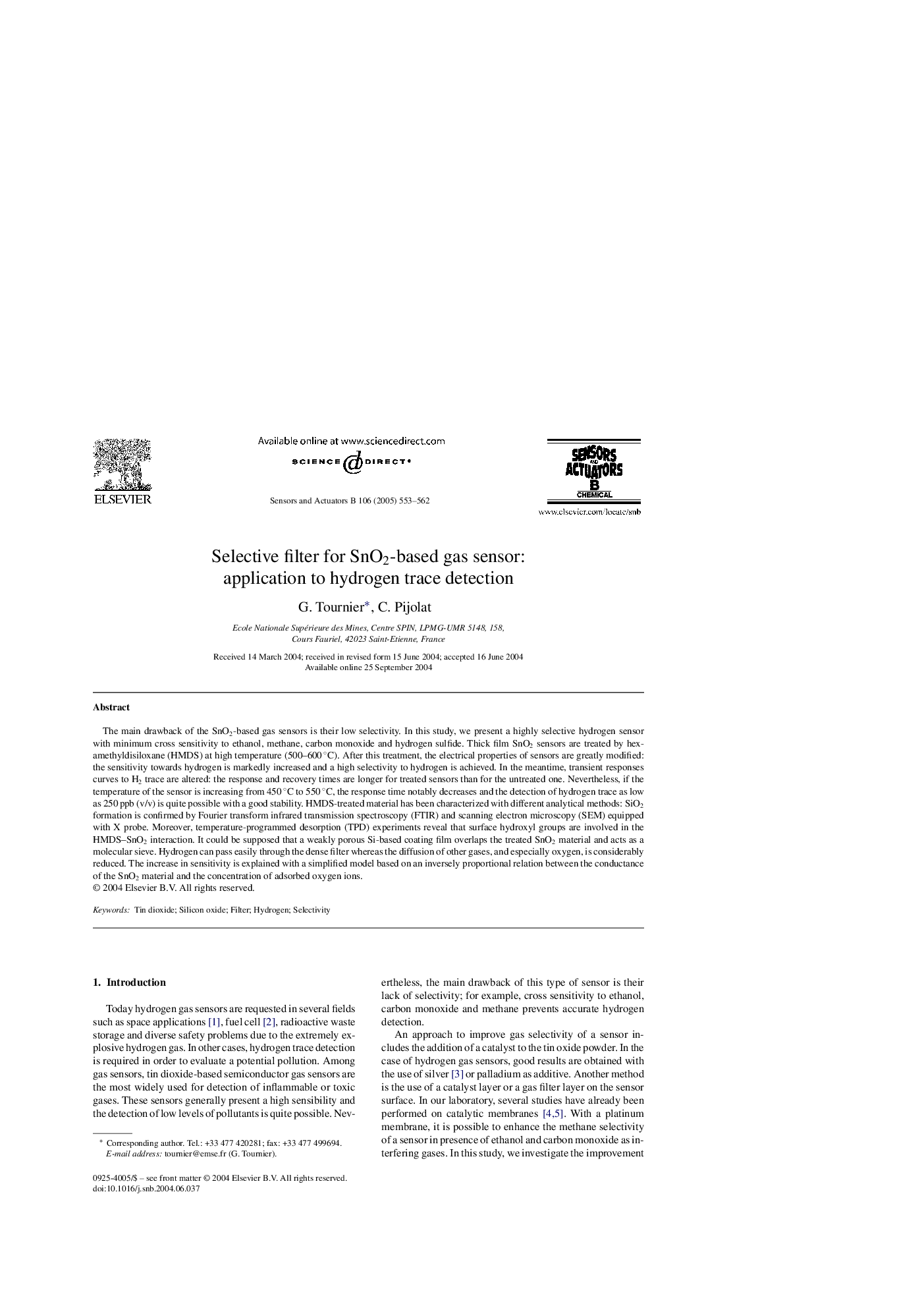| Article ID | Journal | Published Year | Pages | File Type |
|---|---|---|---|---|
| 10410958 | Sensors and Actuators B: Chemical | 2005 | 10 Pages |
Abstract
The main drawback of the SnO2-based gas sensors is their low selectivity. In this study, we present a highly selective hydrogen sensor with minimum cross sensitivity to ethanol, methane, carbon monoxide and hydrogen sulfide. Thick film SnO2 sensors are treated by hexamethyldisiloxane (HMDS) at high temperature (500-600 °C). After this treatment, the electrical properties of sensors are greatly modified: the sensitivity towards hydrogen is markedly increased and a high selectivity to hydrogen is achieved. In the meantime, transient responses curves to H2 trace are altered: the response and recovery times are longer for treated sensors than for the untreated one. Nevertheless, if the temperature of the sensor is increasing from 450 °C to 550 °C, the response time notably decreases and the detection of hydrogen trace as low as 250 ppb (v/v) is quite possible with a good stability. HMDS-treated material has been characterized with different analytical methods: SiO2 formation is confirmed by Fourier transform infrared transmission spectroscopy (FTIR) and scanning electron microscopy (SEM) equipped with X probe. Moreover, temperature-programmed desorption (TPD) experiments reveal that surface hydroxyl groups are involved in the HMDS-SnO2 interaction. It could be supposed that a weakly porous Si-based coating film overlaps the treated SnO2 material and acts as a molecular sieve. Hydrogen can pass easily through the dense filter whereas the diffusion of other gases, and especially oxygen, is considerably reduced. The increase in sensitivity is explained with a simplified model based on an inversely proportional relation between the conductance of the SnO2 material and the concentration of adsorbed oxygen ions.
Related Topics
Physical Sciences and Engineering
Chemistry
Analytical Chemistry
Authors
G. Tournier, C. Pijolat,
